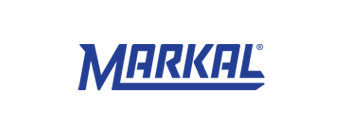7 Deadly Wastes of LEAN

LEAN Manufacturing is a smarter way for companies to operate in order to save time, money and keep customers happy. An important step is to identify the top reasons that a company is performing inefficiently. In LEAN Manufacturing, there is a standard way to identify these issues, by identifying the 7 Deadly Wastes. What exactly are these wastes? An easy way to remember them is to think of TIM WOOD. They are considered waste simply because they have the potential to add no value to what is wanted or needed. If a step is not adding value, it is considered a waste. Let's take a look at what they are:
Transport- Transporting products and work is a necessity that has to be controlled in order to avoid wasteful time or distance. This can add cost that the customer would NOT like to pay for because it does not change or transform the product in any way. It is also important that the product does not stay in this phase of the process long because it can run the risk of being damaged, delayed or lost. The longer a product lasts in transport, the longer there is no value being added to it.
Quick Tip: Quite often using bigger equipment for more general use can be a huge transport waste. Smaller more dedicated equipment can help eliminate some of the extra waste in transportation. An example is the Stylotube; a dot marker that can help dedicate parts to areas in order to reduce transportation in a rather effortless way.
Inventory- It is important to keep an eye on inventory! Product that is sitting around is not adding value. No matter what state of process it is in, if it hasn't been sold, it is cash that is being tied up and lost with the inventory. In the end it can once again lead to unhappy customers.
Quick Tip: To initially help clean up inventory, using a marker such as the Valve Action Paint marker to mark stock can assist in organization. Using different colors to code what is new vs. old or any method that works best for the company.
Movement/Motion- Motion or movement has similar waste to transportation except, it is referring to the movement of equipment or operator. Movement has the potential to be a large waste because of the opportunities it presents to lower efficiency. Imagine the time that an operator spends lifting, searching around for items or moving items instead of assembling and adding value to the ultimate product.
Quick Tip: The extra movement or use of equipment can wear it out, it can possibly cause friction that will damage it. To measure if it has reached a certain temperature, sticking a Tempilabel on a machine can determine if equipment is being overused.
Waiting- Waiting and delays is a waste because waiting or delaying anything means the product is costing money while losing value. Work in progress goods may be sitting around untouched which can be an indication of unbalanced processes in the flow.
Quick Tip: Waiting can mean inventory sitting out without a purpose. Marking this inventory temporarily to know where it stands in the process may be useful. Using a marker such as the PRO-WASH can help identify inventory that has been a waste.
Over Production- This waste is the worst out of the 7 because it includes aspects from all the other wastes. When the processes are not effective and efficient, it can lead to overproduction. Inaccurate forecasting can also cause this waste as well as tradition in a company. If it's the way "it has always been done" this waste can go on and no one will blink an eye to it. In the end it is valuable time and energy going into the production of objects that later on go to sit and collect dust- all at the extra cost of the company, hurting the bottom line.
Over Processing- The waste of over-processing is simply adding more value to a product than the customer needs. It can be painting a piece that will never be seen or polishing a space that does not require it. This includes extra labor and it can come from not having a standardized process or not knowing what exactly a customer needs or wants.
Defects- Last but not least is the waste of defects. When a product or service is not what the customer requested due to a mistake, the company has to take the fall on extra time and labor used to fix this defect. There are many ways that a defect can be caused by, such as bad process design, poor equipment maintenance or bad employee training and culture.



















Comments 0